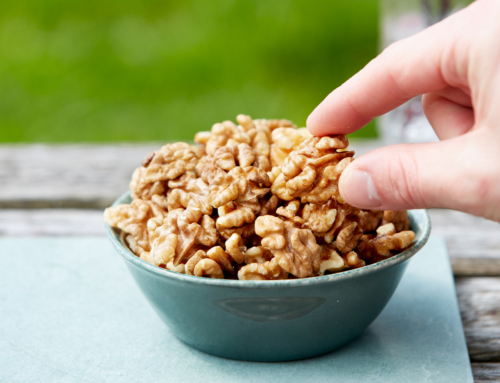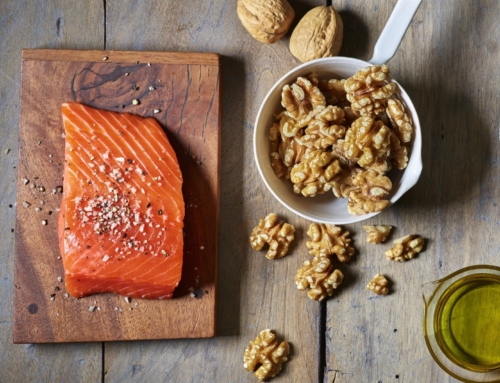Regular consumption of foods rich in omega-3s, including walnuts and fish, can reduce risk of death three years after suffering a heart attack
A new study published in the Journal of the American College of Cardiology found that regular consumption of foods rich in omega-3 eicosapentaenoic acid (EPA), found in marine foods like fatty fish, and alpha-linolenic acid (ALA), found in plant foods like walnuts, was associated with improved outcomes in individuals who suffered a heart attack, including decreased risk of death. Additionally, the consumption of both ALA and EPA provided the greatest benefit, suggesting a synergistic effect and unique protective qualities when both types of omega-3 are consumed.
The observational study, supported by the California Walnut Commission and reinforced by an editorial in the same publication entitled “A Revolution in Omega-3 Fatty Acid Research,” included 944 participants who experienced a very serious heart attack in which one of the heart’s major arteries was blocked. Clinicians refer to this as a ST-segment elevation myocardial infarction (STEMI).
Heart and circulatory diseases cause more than a quarter (27%) of all deaths in the UK, equivalent to nearly 170,000 deaths each year and an average of 460 people each day. More than 100,000 hospital admissions each year are due to heart attacks.[1] A lead researcher in the study, Dr. Aleix Sala-Vila, Research Associate at IMIM (Hospital del Mar Medical Research Institute) and Barcelonaβeta Brain Research Center, explains, “Heart attacks are still very common, and aside from treatments to keep the patient alive, researchers have been exploring approaches to secure the quality of life of the patient after the heart attack. What is novel about this research is that it shows that ALA and EPA appear to be partners in improving the long-term outcomes of heart attack sufferers. Consuming both marine and plant-based omega-3s, from foods like salmon, walnuts, and flaxseed, seems to offer the greatest protection.”
The patients in this study, whose mean age was 61 and were made up of 78% men, had their blood taken during hospital admission. The researchers then determined the level of omega-3s in their blood, a reliable way to establish the intake of omega-3s during the weeks leading up to the heart attack. Next, they explored whether those with higher blood levels of omega-3s at the time of the heart attack were at decreased risk of suffering complications during a three-year follow-up period.
Specifically, the researchers found that that those who showed higher blood levels of ALA were at decreased risk of three-year all-cause mortality. Also, those with higher levels of EPA were at decreased risk of death or needing hospital readmission for cardiovascular reasons.
Walnuts have long been recognized as a heart-healthy food[2] backed by more than 30 years of research showing positive outcomes related to cardiovascular health such as cholesterol, blood pressure, inflammation, endothelial function, and plaque formation. Walnuts are also the only tree nut to contain a significant amount of the plant-based omega-3, alpha-linolenic acid (ALA), 2.7g/ 30g (approx. a handful).
While these results are encouraging, they do not prove cause and effect. Additional research is needed to determine whether EPA and ALA intake specifically contributed to the outcomes, or if other factors like socioeconomic status, education, and pharmacologic treatments also had an effect. Docosahexaenoic acid (DHA, another omega-3 supplied by fatty fish) was not part of this study.






